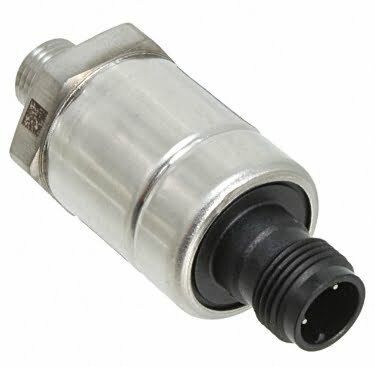Table of Contents
How does an oil pressure sensor work?
An oil pressure sensor is a type of pressure sensor that is used to measure the pressure of the oil in an internal combustion engine.
An oil pressure sensor typically consists of a pressure-sensitive element and a mechanism for converting the pressure into an electrical signal. The pressure-sensitive element is usually a diaphragm, which deforms when subjected to pressure. This deformation is then converted into an electrical signal using one of several mechanisms, such as a strain gauge, a piezo-resistor, or a piezoelectric element.
What does an oil pressure sensor do?
The oil pressure sensor helps to ensure that the oil pressure is maintained at the proper level, which can help to extend the life of the engine. If the oil pressure is too low, it can damage the entire engine due to excessive heat. Conversely, if the oil pressure is too high, it can cause excess wear on the engine.
In some vehicles, the oil pressure sensor also sends a signal to the dashboard to display the oil pressure to the driver. This can be helpful in identifying potential problems with the oil system.
Where is the oil pressure sensor located?
It is usually located on the engine block and is connected to the oil pump. The sensor sends a signal to the engine control unit (ECU), which uses this information to adjust the oil pressure to the proper level.
Symptoms of a bad oil pressure switch/sensor
Here are some common symptoms of bad or faulty pressure sensor:
- Oil pressure warning light: If the oil pressure switch is not working properly, it may trigger the oil pressure warning light on the dashboard.
- Incorrect pressure readings: A faulty oil pressure sensor may send incorrect readings to the engine control unit (ECU), which can cause the oil pressure to be too high or too low.
- Engine damage: If the oil pressure is too low, it can cause engine damage, such as worn bearings or a damaged crankshaft. Conversely, if the oil pressure is too high, it can cause excess wear on the engine.
- Decreased fuel efficiency: A faulty oil pressure switch can cause the engine to run less efficiently, which can result in decreased fuel efficiency.
- Strange noises: If the oil pressure is too low, it can cause the engine to make strange noises, such as knocking or ticking.
If you are experiencing any of these symptoms, it is important to have the pressure sensor checked by a mechanic as soon as possible to prevent further damage to the engine. If the above problems are seen or experienced by you, then you must consider replacing the oil pressure sensor.
How to replace oil pressure sensor?
This is a general procedure to change your pressure sensor. It may vary from manufacturer to manufacture. Always refer to your vehicle OEM guide before doing so.
- Locate the sensor first. It is usually located on the engine block, near the oil filter.
- Disconnect the negative terminal of the battery to prevent accidental electrocution.
- Drain the oil from the engine by removing the oil drain plug and allowing the oil to drain into a container.
- Use a socket set or open-end wrench set to remove the sensor from the engine block.
- Install the new pressure sensor by reversing the steps used to remove the old one.
- Reconnect the negative terminal of the battery.
- Refill the engine with oil, being careful not to overfill it.
- Start the engine and check for any oil leaks. And you are done.
The above procedure looks simple in reading but require trained and knowledgeable person to do the job. If you are new to the process, better visit an authorized service center for the replacement of oil pressure sensor.
How to test oil pressure sensor of your vehicle?
There are several ways to test an oil pressure sensor:
- Using Multimeter: To perform this test, you will need a multimeter and a service manual for the vehicle. First, locate the oil pressure sensor and locate the two wires leading to it. Connect the multimeter to the two wires and start the engine. The multimeter should read a voltage within the range specified in the service manual. If the reading is outside this range, the oil pressure sensor may be faulty.
- Physical inspection: You can also check the oil pressure sensor for visible signs of damage, such as cracks or breaks in the housing.
- Oil pressure gauge test: Another option is to use an oil pressure gauge to test the oil pressure. To do this, you will need to locate the oil pressure sending unit, which is usually located on the engine block near the oil filter. Disconnect the oil pressure sensor and attach the gauge in its place. Start the engine and check the oil pressure using the gauge. Compare the reading to the manufacturer’s specifications to determine if the oil pressure is within the proper range.
It is important to refer to the vehicle’s service manual for specific instructions on how to test the oil pressure sensor, as the exact procedure can vary depending on the make and model of the vehicle. If you are a newbie then the best method to check using multimeter or visit an authorized service center.
Disclaimer: There is a small disclaimer for the ideas and advice given in the article is just for increasing the knowledge. I am not responsible for any accident or damage while following the advice given in this article. Also, there are some affiliate links present in the article which may help me to earn some commission if you visit and purchase those products through the links provided. It will help me to maintain the blog cost.
For more types of sensors, you can visit Auto-Motion-Sensor.

